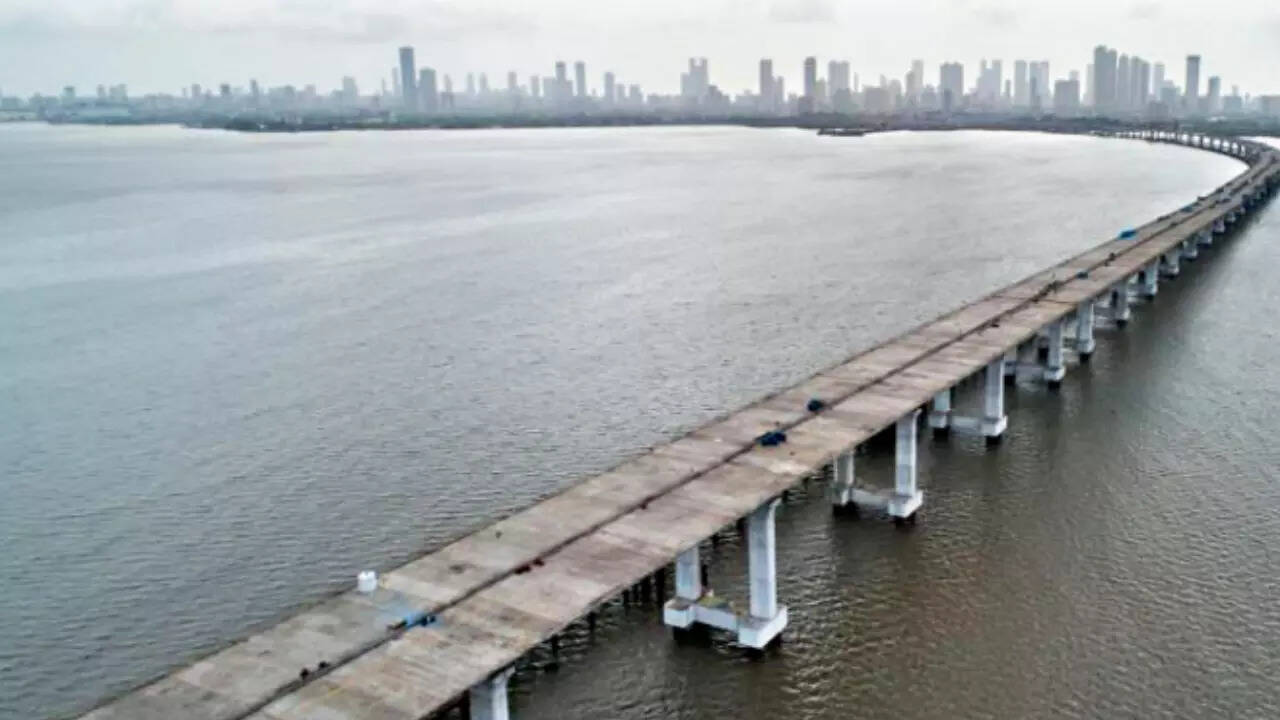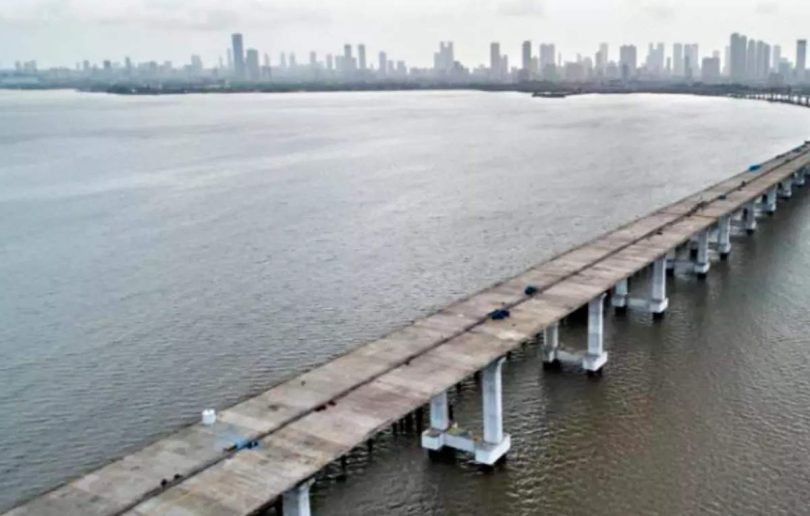[ad_1]

MUMBAI: Over four decades since it was first proposed, the Mumbai Trans-Harbour Link (MTHL), a 22km bridge between the island city and the mainland, is on the verge of being finished.
The main deck is being targeted to be completed by November and the connecting ramps on either side by June. If these deadlines are kept, the nearly Rs 18,000-crore Sewri to Nhava Sheva bridge can be opened by the end of year.
The full benefit of the bridge – touted as a game changer in that it will facilitate eastward development – would be felt once two crucial connectors are ready in a few years: The Worli-Sewri connector, which will directly link the Coastal Road with MTHL, and a direct link to the Mumbai-Pune Expressway from the MTHL’s Chirle-end. With 16.5km over water, MTHL will be the longest sea-bridge in India and the 12th longest in the world.
“Ninety-three percent of the bridge has been completed, with surface paving already begun on parts of the deck,” said SVR Srinivas, commissioner of the Mumbai Metropolitan Region Development Authority (MMRDA), the implementing authority of the project and the bridge’s owner. A 180-metre stretch of water is all that lies between two sides of a bridge that could transform connectivity in the region. MTHL will be “a gamechanger” for regional development, said Srinivas. Mumbai has mostly expanded northwards because of being surrounded by the sea, he noted. “Now, for the first time, there will be an option to expand eastwards. The link will spur redevelopment of cessed buildings in south Mumbai, besides opening up more employment opportunities as businesses may set up their back offices in Navi Mumbai.” The bridge is expected to drastically reduce travel time between Mumbai and Pune on the one hand and between Mumbai and the under-construction Navi Mumbai international airport on the other. With projected annual savings of one crore litres of fuel a year and 25,680 million tons of CO2 emissions, it will have a capacity to handle 50,000-60,000 vehicles a day. Provisions have been made for anti-crash and noise barriers as well as an AI system to monitor traffic.
There will be interchanges at Sewri in Mumbai, and Shivaji Nagar and Chirle in Navi Mumbai, said MMRDA chief engineer SA Wadhekar. A toll plaza will be at Gawhan, Navi Mumbai. An open road tolling system will allow collection without booths, so that vehicles do not need to slow down or stop to pay toll. The bridge is designed for speeds of 100 kmph.
Owing to the nature of the project, the technological and ecological challenges have been steep. Engineers said the latest construction and material technologies helped navigate the challenges of building in a complex environment, one that includes a monsoon climate that restricts work in some months and a harbour topography filled with fishing boats, container ships, an atomic facility, and oil pipelines.
The idea of a cross-harbour bridge for Mumbai has been around since the early 1970s. A 1972 government committee proposed a bridge from Colaba to Uran that was opposed by naval and port authorities. In 1981, a steering group headed by JRD Tata recommended the Sewri-Nhava Sheva route. By 1984, a final alignment had been approved by PMO, but the plan lay dormant until the mid-1990s, when another review was done. It was only in 2004 that the first effort was made to get the project off the ground with a proposal from the state-funded IL&FS. A call for bids the following year brought more players to the table, notably rival bids by the Ambani brothers, with a Reliance Energy consortium winning out by 2008, only to be discarded later as “unrealistic”. Finally, after MMRDA received a single bid from a pre-qualified consortium in 2013, it decided to execute the project on cash contract. The work of building the Sewri side of the bridge as well as land work went to a consortium of L&T and Japan’s IHI Infrastructure Systems; the Navi Mumbai side of the bridge was assigned to Daewoo-Tata. Work on ground began in April 2018.
Meanwhile, the project cost escalated from Rs 4,500 crore in 2005 to Rs 17,843 crore in 2018, about 85% of which was funded by a loan from the Japan International Cooperation Agency (JICA). The bridge is intended to last a hundred years.
[ad_2]
Source link









